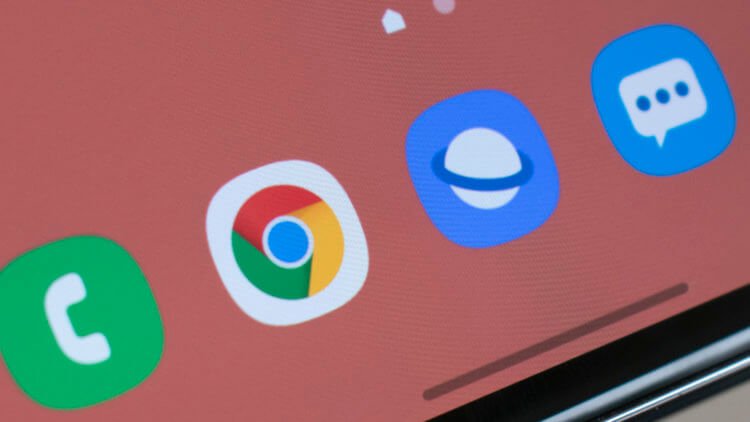If someone had undertaken to compile a rating of the most economical browsers, Google Chrome most likely would not have entered the top ten. Too much energy, memory and power, it eats away even with seemingly not the most serious loads. At Android the situation is slightly better. In any case, mobile Chrome has never in my memory provoked lags or clogged up the entire RAM, which can be easily attributed to the lack of extensions. But it turns out that Chrome can save not only device resources, but also your internet traffic.

Google Chrome made more economical thanks to lazy loading
Lazy Load mode appeared in Google Chrome for Android last year. Its purpose was to reduce the consumption of Internet traffic on mobile devices, where it is usually limited, by consistently loading content on web pages. That is, instead of downloading the content of an open site right away, Chrome downloaded it as it scrolled. This allowed us to save several tens of megabytes unspent on each site, with the result that the savings were quite tangible. But Google didn't seem to be enough.
Lazy loading in Chrome

Now Lazy Load mode more efficiently distributes the loading sequence of different elements of the site
According to Addi Osmani, manager of engineering at Google, the company decided to change the mechanics of Lazy Load in order to improve its efficiency. If earlier 'lazy loading' extended only to large images with a resolution of 3000 pixels for a slow connection and 4000 for a fast one, while the rest of the images were loaded regardless of whether the user browsed to them or not, now the minimum resolution threshold has been reduced to 1250 and 2500 pixels respectively.
In addition, Google developers have expanded the scope of the Lazy Load mode, extending it not only to pictures, but also to widgets and videos. The fact is that even an unplayed video can consume several megabytes due to the loading of the screensaver, which also weighs something. Therefore, even if the user did not scroll the page to the fragment where the video was inserted, the Internet traffic available to him was still spent on something that he, in essence, did not see.
Overclock Google Chrome

Thanks to lazy loading, Google Chrome saves not only traffic, but also loads the content of web pages faster
However, Lazy Load not only saves traffic, but also speeds up content processing. After all, due to the fact that when opening a page, the browser has to digest less data, loading the visible part is faster. And thanks to special mechanisms, the loading of fragments that are located outside the user's field of view still occurs with a small margin. That is, the user does not even have time to scroll to the end, and the elements placed on the page are already loaded. This ensures seamless interaction.
Google is putting a lot of effort into developing Chrome, and this can be seen in the way the browser is improving. But, as far as performance is concerned, the search giant clearly falls short. Anyway, the same Safari as Apple showed in the presentation last month, runs 50% faster than Chrome, taking less time to load content. But Safari, by the way, is absolutely not inferior to the Google browser in terms of functionality, and in terms of security, it even surpasses it. Therefore, Chrome still definitely has room to grow.
